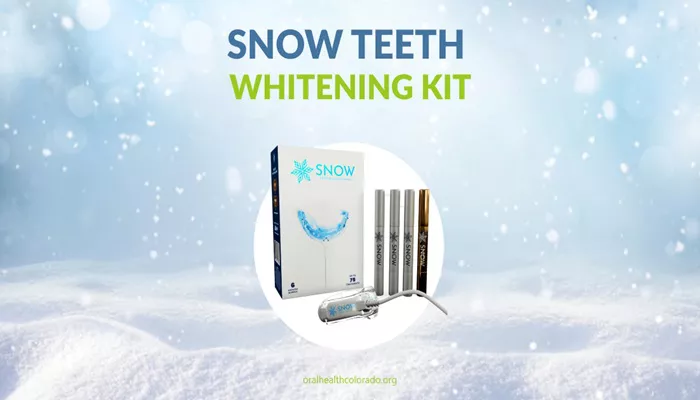Teeth whitening has become increasingly popular as individuals seek brighter smiles and enhanced confidence. Among the various whitening options available, “snowflake whitening” has emerged as a trendy choice. Marketed for its ease of use and aesthetic appeal, many people wonder about its safety and effectiveness. This article will explore what snowflake whitening is, how it works, its safety profile, potential side effects, and best practices for use.
Understanding Snowflake Whitening
What is Snowflake Whitening?
Snowflake whitening refers to a specific type of teeth whitening system that typically uses a gel-based formula designed to be applied directly to the teeth. The name “snowflake” often evokes images of a bright, pristine smile, similar to the appearance of fresh snow. These products may contain various active ingredients, including hydrogen peroxide or carbamide peroxide, which are commonly used in teeth whitening.
How Does Snowflake Whitening Work?
Snowflake whitening products work by applying a bleaching agent to the teeth. The active ingredients penetrate the enamel and dentin layers, breaking down stains caused by food, beverages, and other factors. The process generally involves the following steps:
Preparation: Users clean their teeth to remove plaque and debris.
Application: The whitening gel is applied using an applicator or pen.
Activation: Some products may require a specific light or device to enhance the whitening effect.
Waiting Period: After application, users typically refrain from eating or drinking for a set period to allow the whitening agents to work effectively.
Is Snowflake Whitening Safe for Your Teeth?
1. Active Ingredients
The safety of snowflake whitening largely depends on the active ingredients used in the formulation. Most whitening products contain either hydrogen peroxide or carbamide peroxide.
Hydrogen Peroxide
Concentration Levels: Hydrogen peroxide is a powerful bleaching agent. Over-the-counter products usually contain lower concentrations (around 3-10%) compared to professional treatments (which can be up to 40%).
Safety Profile: When used as directed, hydrogen peroxide is generally considered safe for teeth whitening. However, overuse or high concentrations can lead to sensitivity and other issues.
Carbamide Peroxide
Composition: Carbamide peroxide breaks down into hydrogen peroxide when applied to teeth. It is often found in lower concentrations in at-home whitening products.
Safety Considerations: Like hydrogen peroxide, carbamide peroxide is safe when used according to instructions. It is often preferred for at-home use due to its gentler formulation.
2. Potential Side Effects
While snowflake whitening can be effective, it is essential to be aware of potential side effects:
Tooth Sensitivity
Increased tooth sensitivity is one of the most common side effects of teeth whitening, including snowflake whitening. This sensitivity occurs when the whitening agents penetrate the enamel and irritate the nerves inside the teeth.
Management: If you experience sensitivity, consider using desensitizing toothpaste both before and after the whitening treatment. Additionally, limit the frequency of use to allow your teeth to recover.
Gum Irritation
Improper application of whitening gels can lead to gum irritation. If the gel comes into contact with the gums, it can cause discomfort and inflammation.
Prevention: To minimize gum irritation, carefully follow the product instructions. Avoid over-applying the gel and ensure it only contacts the teeth.
Enamel Erosion
Excessive or improper use of whitening products can potentially lead to enamel erosion. This condition can make teeth more susceptible to decay and sensitivity.
Caution: Use whitening products as directed and avoid overuse. Consult with a dentist if you are unsure about the frequency of use.
3. Product Quality and Regulation
The safety of snowflake whitening products can vary based on the manufacturer and formulation. It is crucial to choose products that are reputable and have been tested for safety and effectiveness.
FDA Regulations
In the United States, the Food and Drug Administration (FDA) does not specifically regulate teeth whitening products.
However, it does regulate the ingredients used in these products. Look for products that comply with safety standards and have positive reviews from consumers.
Professional Recommendations
Consulting with a dentist before starting any whitening treatment is advisable. Dentists can recommend safe and effective products tailored to your dental needs.
Best Practices for Using Snowflake Whitening
1. Follow Instructions Carefully
To ensure safety and effectiveness, always follow the manufacturer’s instructions for use. Each product may have specific guidelines regarding application time, frequency, and precautions.
2. Perform a Patch Test
Before using a new whitening product, consider performing a patch test. Apply a small amount of the gel to a less visible tooth and monitor for any adverse reactions. This can help identify potential sensitivity or irritation before full application.
3. Maintain Good Oral Hygiene
Good oral hygiene is essential for achieving optimal whitening results. Brush and floss regularly to remove plaque and prevent stains from accumulating on your teeth.
4. Limit Staining Foods and Beverages
After whitening, it is advisable to limit the consumption of foods and beverages that can stain teeth, such as coffee, tea, red wine, and dark berries. This will help maintain the results of your whitening treatment.
5. Consider Professional Options
If you have concerns about the safety or effectiveness of snowflake whitening, consider professional whitening treatments performed by a dentist. These treatments often provide more significant and longer-lasting results with reduced risk of sensitivity.
Conclusion
Snowflake whitening can be a convenient and effective way to achieve a brighter smile. However, it is essential to understand the potential risks and side effects associated with these products. By choosing reputable products, following instructions carefully, and maintaining good oral hygiene, individuals can safely use snowflake whitening to enhance their smiles. Before starting any whitening treatment, it is always best to consult with a dental professional. They can provide personalized recommendations based on your dental health and help you achieve the best results while minimizing risks.
With proper care and attention, snowflake whitening can be a safe and effective option for those seeking a whiter smile.
Related topics:

